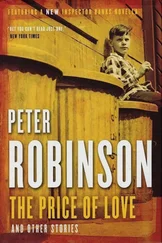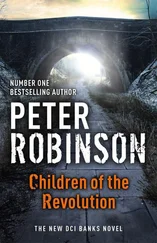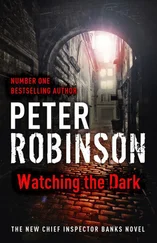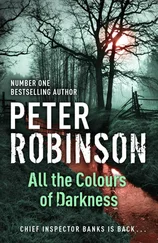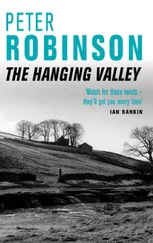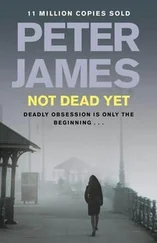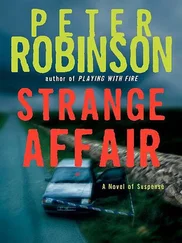‘Bloody hell,’ said Banks. ‘The poor girl.’
‘Indeed. Her name was Faye Butler, and she worked at Foyles on Charing Cross Road, in the art section. She was twenty-eight years old. Her body was found on 23 May. That was a Thursday.’ Banks remembered. It was the same day he and Gerry Masterson had found Blaydon’s body in the pool. ‘Her flatmate in Camden Town had reported her missing.’ Burgess paused to drink some pilsner. ‘You know as well as I do, Banksy, what it’s like with missing persons. You do your best to reassure the family or friends that nothing bad’s happened, that it’s perfectly normal for a young woman not to come home one night without phoning or anything. But it fucking isn’t. We know it isn’t. And from the moment you take the first call, you get that cramped feeling in your gut, and you just know that something’s wrong.’
Banks knew the feeling. Missing persons were some of the hardest cases to handle if you let your imagination run away with you. Especially young girls. You could picture terrible things happening while you were reassuring the rest of the world that she would probably come walking in full of apologies at any moment, tell you that she’d stopped at her boyfriend’s and just forgot to mention it to anyone. ‘What happened next?’ he asked.
‘We made inquiries, but they didn’t lead us anywhere. Naturally, the boyfriend came in for a bit of grief. Bloke called Grant Varney. They’d been together about three months. He said he hadn’t arranged to see her that night and that she hadn’t called around at his place. There were some of her things there — clothes, books, cosmetics, toothbrush — and apparently, she spent a fair bit of time there with him. They hadn’t made any final commitment to live together or anything, but he said he was hoping she would agree to a more permanent arrangement. He knew she was still on the rebound at the moment, he said, and he was willing to wait. Varney was devastated. Ted said he thought he was a decent kid, and he was cleared pretty quickly. We did reconstructions of her route home, talked to people who took the same route, had seen her on occasion, but nobody noticed anything out of the ordinary.’
‘How did she travel?’
‘Faye usually walked home as long as it wasn’t pissing down. She’d head up Tottenham Court Road, then Hampstead Road, and on a nice evening she’d cut through St. Martin’s Gardens on Camden Street. One witness thought she saw her talking with a man in the gardens, walking towards the road. She didn’t get a good look at him, so we have no description except that he was stocky and was wearing a black T-shirt and ice blue jeans, but she did say that Faye seemed quite at ease, as if she knew him. You know, she didn’t appear uncomfortable or scared, wasn’t trying to get away. And the man wasn’t in physical contact with her. He didn’t grab her or anything. As far as our witness could tell she was just walking along chatting with a friend.’
‘And that was the last time she was seen alive?’
‘Yes. Except by her killer, of course. And he must have had transport of some kind. Her body was found some distance away from Camden. But nobody saw her getting into a car. We’ve had appeals out and done reconstructions, but no one’s come forward with any new information and we got nothing from CCTV. It was as if she just disappeared into space.’
‘He must have had a car waiting nearby,’ said Banks. ‘And maybe an accomplice.’
‘We thought of that. I think you’re probably right, but nobody remembers anything. It’s also likely she got in the car willingly, if it was someone she knew.’
‘I agree it’s a nasty one,’ said Banks, ‘but where do I come in? And Zelda?’
‘When we made inquiries at Faye’s place of work, one of her colleagues told us that she was working the third floor about a week before the disappearance, and this woman came around asking for Faye. The colleague said she sent her to the ground floor, where we found out that she asked a lad called Lee Wong about Faye. Lee went and fetched her. The two of them chatted, then went upstairs to the cafe. Lee said he didn’t know Faye well, but we talked to some more of her workmates, and they all said the usual. You know, what a fine person she was — nice girl, always cheerful, helpful, and so on. Ask about the dead and you’d think we were all saints. It was the flatmate, Agnes Hall, who told us that Faye had been a bit down in the dumps for a while after splitting up with her previous boyfriend. Apparently, she found him in flagrante with another girl.’
‘Any idea who he was?’
‘We couldn’t get any further questioning Agnes or Faye’s friends at work. No one remembered the ex enough to give more than the vaguest of descriptions. As far as Agnes knew, Faye had never invited him back to the flat. At least not while she was there. Medium height, good-looking, light brown hair, small beard, no particular accent. Rather like the barman’s description from The George and Dragon, I thought. Only she added she thought the hair was maybe just a bit too light brown.’
‘Dye job?’
‘Sounds like it. He’d been in the shop a couple of times, apparently, chasing after an art book, and that’s how he and Faye first met. All her workmates knew was that his first name was Hugh. A couple of them told us they thought he was too old for Faye, despite the hair. Naturally, he became a person of interest very quickly.’
‘Any luck?’
‘No. Not at first. But when we searched Faye’s flat, we found some printed selfies of her with a bloke taken in Regent’s Park, and it wasn’t Grant Varney. This bloke was medium height, good-looking, light brown hair, little beard.’
‘Age?’
‘In his mid-forties, maybe, but well preserved. Could’ve been older. Fifty, even.’
‘Hugh?’
‘The roommate confirmed it. The dates matched, too. They’d been taken around Christmas — you could tell by the lights and decorations — a few months after she took up with him, and not too long before they split up. Her mobile went missing with her, but we found her laptop in the flat, and there were emails from a bloke called Hugh Foley. We couldn’t trace him from them, though, and the email address is no longer in use. There was no entry for him in her contacts list.’
‘Anything in the emails?’
‘Plenty,’ said Burgess. ‘All along the lines of, “I can’t wait to suck your throbbing—” ’
‘I catch the drift,’ said Banks.
‘That’s from her, by the way. The ones from him seem to involve agricultural metaphors, mostly to do with ploughing and irrigation. No addresses, mobile numbers, or arrangements to meet.’
‘I assume they did all that through texts, or maybe even over the phone. Again, I’m having a bit of trouble working out how I could be involved. Unless you’ve got something up your sleeve. Something you’re not telling me.’
‘Just two things,’ Burgess said. ‘First, the description of the woman asking about Faye Butler in Foyles bears a remarkable similarity to Chris the barman’s description of Zelda, right down to the faint accent, and secondly, well, see for yourself.’ Burgess dropped a photograph on the table in front of Banks.
Banks stared at it and his jaw dropped. Despite a few minor cosmetic changes — hairline and colour, the addition of a light beard — the man in the selfies with Faye Butler, the man who went by the name of Hugh Foley, was a ringer for Phil Keane.
‘Jesus Christ,’ Banks muttered, pushing the photograph aside. ‘And what’s the link with Zelda?’
‘Ted Barclay would like to have her brought in to talk to her, too, and maybe find out the answer to that. Which is where you come in. I managed to persuade Ted to let you have a go first, told him you were familiar with aspects of her background and so on. I also lied a bit. Told him you were an excellent detective, and as you already knew her, and she trusted you, you’d be far more likely to get something out of her. He didn’t like it, but he agreed to give us some leeway.’
Читать дальше



